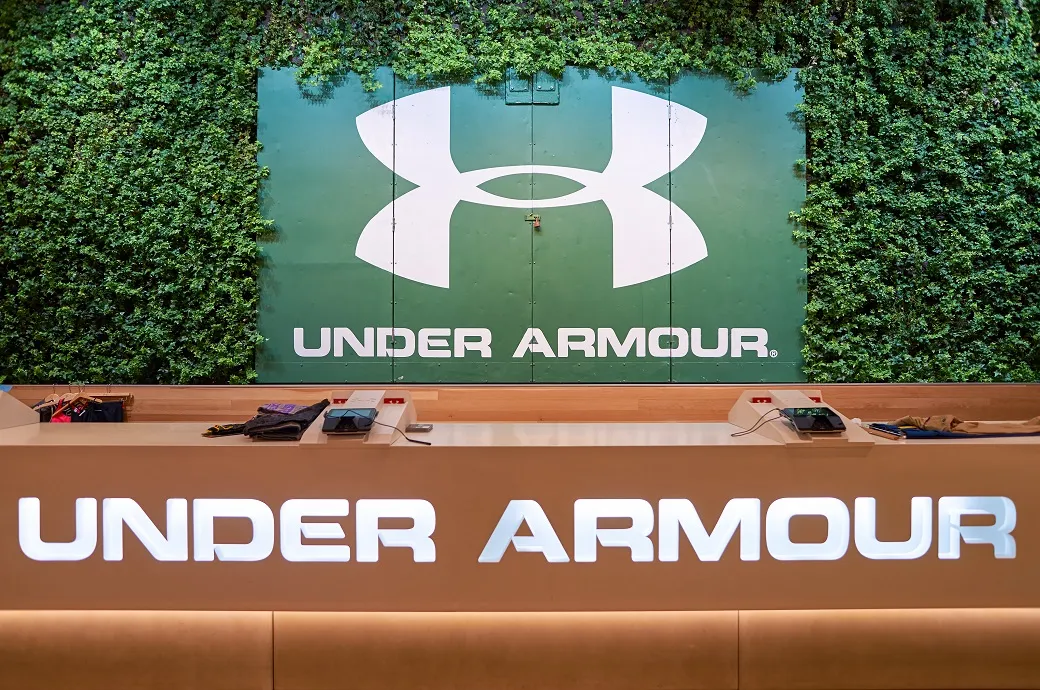Emerging from the humble basement of a former football player in 1996, Under Armour has transformed into a global powerhouse in the world of sports apparel. Driven by a relentless pursuit of innovation and a deep understanding of athletes’ needs, Under Armour has redefined the standards of performance wear, empowering athletes to push their limits and achieve their goals.
The Genesis of Under Armour: A Passion for Performance
Kevin Plank, a young football player at the University of Maryland, was the driving force behind Under Armour’s inception. Frustrated with the inadequacy of traditional cotton T-shirts that soaked up sweat and became heavy during intense training sessions, Plank sought to create a more functional and comfortable alternative.
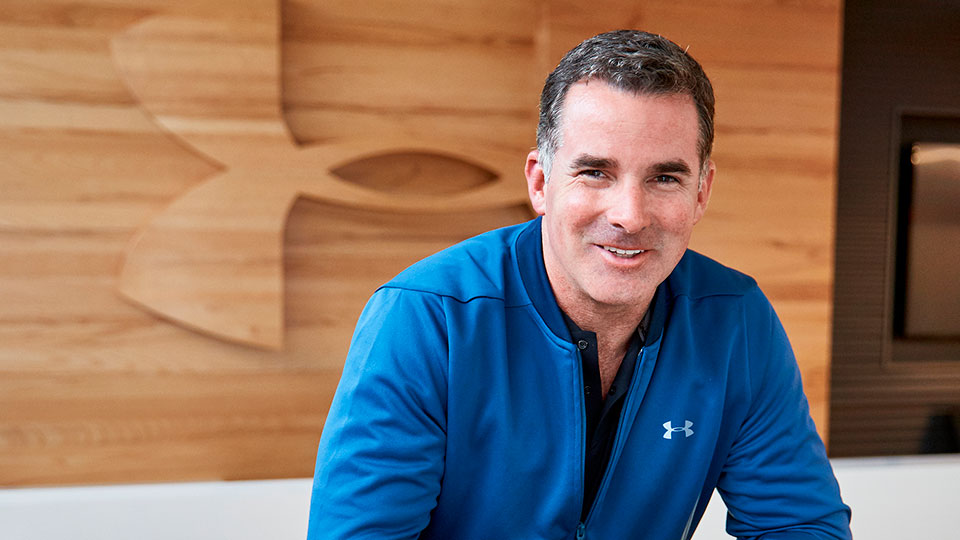
In the basement of his grandmother’s house, Plank embarked on a journey of experimentation, utilizing moisture-wicking fabrics designed for sportswear to create a new type of undergarment. His creation, a form-fitting, sweat-absorbing shirt, marked the genesis of Under Armour.
A Revolutionary Approach to Performance Wear
Under Armour’s initial success was built on its groundbreaking fabric technology. The company’s signature HeatGear® and ColdGear® fabrics revolutionized the industry, providing athletes with garments that regulated temperature and enhanced performance in various conditions.
Plank’s vision extended beyond fabrics to encompass design and construction. Under Armour’s garments were meticulously crafted with compression technology, strategically placed seams, and ample movement for unrestricted activity. Every stitch, every rivet, every element of Under Armour’s apparel was thoughtfully designed to maximize performance and support athletes’ movements.
The Rise of a Global Sports Icon
Under Armour’s innovative approach quickly gained traction among athletes, from professional football players to weekend warriors. The brand’s performance-enhancing apparel resonated with those who demanded the best from their gear, propelling Under Armour into the forefront of the sports apparel industry.
Strategic partnerships with renowned athletes, such as basketball legend Stephen Curry, further amplified Under Armour’s visibility and appeal. The brand’s association with top performers reinforced its reputation as a leader in innovation and performance, attracting a loyal following among athletes and sports enthusiasts worldwide.
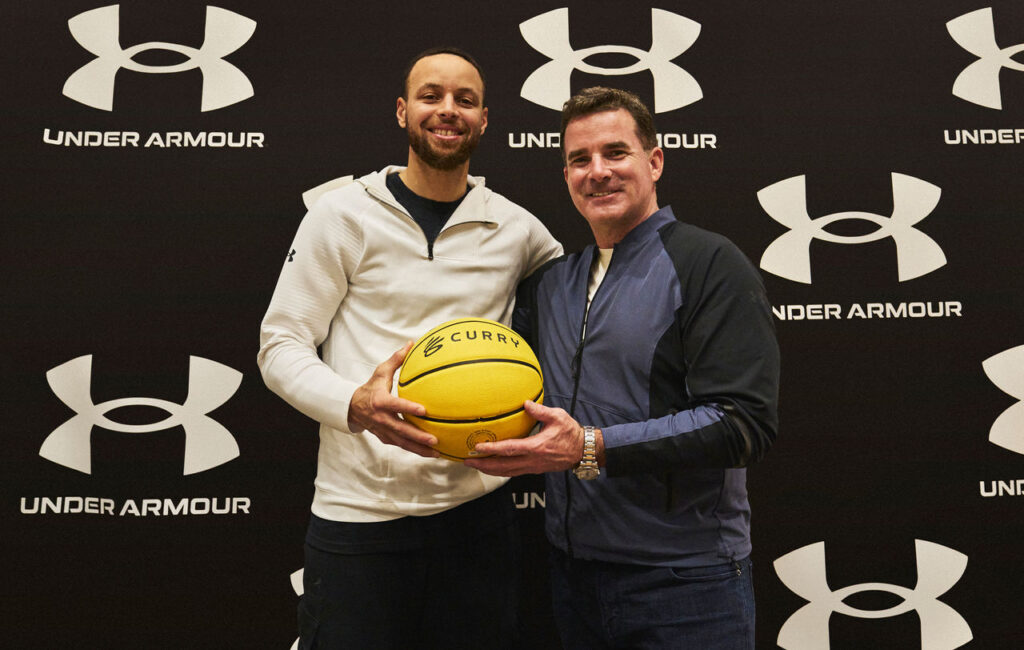
Under Armour: A Legacy of Innovation and Empowerment
Today, Under Armour stands as a testament to the power of innovation, dedication, and a deep understanding of athletes’ needs. Its legacy extends beyond apparel; the brand has become a cultural icon, synonymous with pushing boundaries and achieving the impossible.
Under Armour’s impact is not limited to the sports arena. The brand has expanded into various lifestyle categories, offering casual wear, footwear, and accessories that embody its core values of performance, innovation, and dedication to empowering individuals to reach their full potential.
Under Armour’s story is one of relentless pursuit, unwavering commitment to innovation, and a profound understanding of athletes’ needs. From its humble beginnings in a basement to its position as a global leader in sports apparel, Under Armour has consistently delivered products that empower athletes to push their limits and achieve their goals. The brand’s legacy continues to endure, as Under Armour remains a symbol of innovation, resilience, and the unwavering spirit of human performance.
Marketing Strategy of Under Armour
Under Armour’s marketing strategy has evolved over the years, but the company’s primary focus has consistently been on creating a strong brand identity and building a loyal customer base through authentic and engaging storytelling. Here are some key components of Under Armour’s marketing strategy:
1. Brand Positioning
Brand positioning is a key marketing strategy for Under Armour that has established itself as a leader in the athleisure market. The brand’s positioning strategy is centered around its mission to empower athletes and help them perform at their best.
Under Armour’s brand positioning is built around several key pillars. Firstly, the brand is committed to providing cutting-edge technology and innovative products that help athletes improve their performance. This includes its signature Moisture-wicking fabric, which keeps athletes cool and dry during competition, as well as its Curry 6 basketball shoes, which feature advanced cushioning and support systems.

Secondly, Under Armour’s brand positioning emphasizes the importance of comfort and style. The brand’s products are designed to be both functional and fashionable, allowing athletes to look and feel great whether they’re on the field, in the gym, or on the street. This focus on comfort and style has helped Under Armour appeal to a broad range of consumers, from elite athletes to casual exercisers.
Thirdly, Under Armour’s brand positioning is centered around the idea of community and collaboration. The brand believes that athletes are stronger together, and it has created a platform called UA We Will Community to connect athletes and provide them with resources, support, and motivation. This platform allows athletes to share their experiences, advice, and insights with one another, creating a sense of camaraderie and shared purpose.
Finally, Under Armour’s brand positioning is built around the concept of “empowerment.” The brand believes that athletes should be empowered to take control of their own success, and it provides them with the tools and resources they need to achieve their goals. This includes its popular “I Will” campaign, which encourages athletes to set their sights on their dreams and work towards achieving them.
Overall, Under Armour’s brand positioning strategy is designed to create a powerful emotional connection with its target audience. By emphasizing innovation, comfort, style, community, and empowerment, the brand has established itself as a leader in the athleisure market and continues to inspire and motivate athletes around the world.
2. Target Audience
arget audience is a crucial aspect of Under Armour’s marketing strategy, as the brand aims to connect with consumers who share its passion for athletic performance and comfort. Under Armour’s target audience can be described as follows:
Demographic:
- Age: Under Armour’s primary target audience falls within the 18-35 age range, although the brand also caters to younger and older consumers who share its values.
- Gender: Both men and women are part of Under Armour’s target audience, with a focus on those who participate in sports and fitness activities.
- Income: Under Armour’s target audience generally has a higher disposable income, allowing them to invest in high-quality athletic wear and equipment.
Psychographic:
- Passion for athletic performance: Under Armour’s target audience is driven by a desire to perform at their best, whether they are professional athletes or casual exercisers. They seek out products that can enhance their performance and help them achieve their goals.
- Comfort-focused: Under Armour’s target audience prioritizes comfort and functionality in their athletic wear. They want clothing that feels good, fits well, and allows them to move freely.
- Style-conscious: While performance is paramount, Under Armour’s target audience also cares about looking good. They want clothing that is visually appealing and complements their personal style.
- Tech-savvy: Under Armour’s target audience is familiar with technology and seeks out products that incorporate advanced features, such as moisture-wicking fabrics, breathable mesh panels, and smart fabrics that track performance metrics.
Behavioral:
- Active lifestyle: Under Armour’s target audience leads active lifestyles, engaging in regular exercise, sports, and outdoor activities. They seek out products that can keep up with their busy schedules and varied interests.
- Health-conscious: Under Armour’s target audience prioritizes health and wellness, choosing products that promote physical activity, nutrition, and recovery.
- Loyal: Once Under Armour’s target audience finds a product that meets their expectations, they tend to become repeat customers, loyal to the brand and its offerings.
By understanding its target audience, Under Armour can tailor its marketing strategies to effectively reach and engage with its desired consumer base. This includes creating product lines that cater to specific sports and activities, developing marketing campaigns that resonate with its target audience’s values and interests, and partnering with influencers and ambassadors who embody the brand’s vision.
3. Product Innovation
Product innovation is a vital aspect of Under Armour’s marketing strategy. The brand continuously strives to develop new and improved products that meet the evolving needs of its target audience. To achieve this, Under Armour’s product development team works tirelessly to improve existing products and create new ones that address specific needs and concerns of athletes.
One notable example of Under Armour’s product innovation is its signature Moisture-wicking fabric. Introduced in the early 2000s, this technology revolutionized the sports apparel industry by keeping athletes cool and dry during competition. The fabric’s unique design pulls sweat away from the skin, allowing athletes to perform at their best without feeling weighed down by heavy, wet clothing.
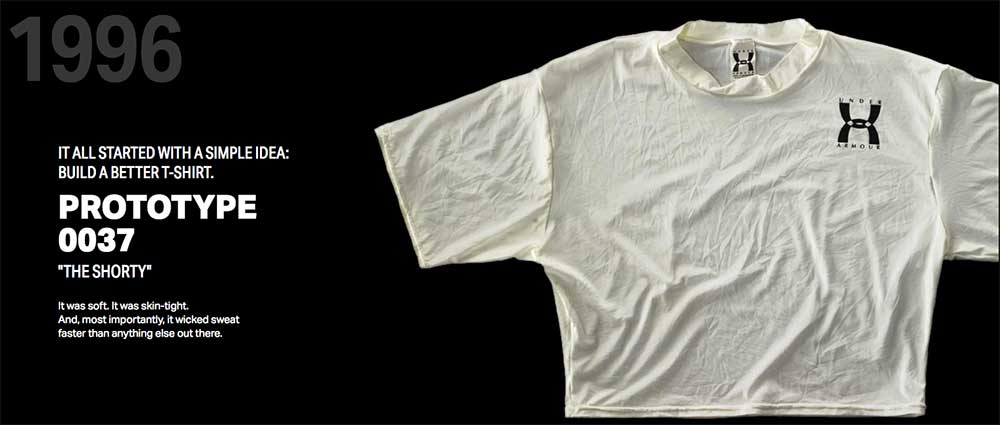
Since the introduction of Moisture-wicking fabric, Under Armour has continued to iterate and improve upon this technology. The brand has introduced new versions with enhanced performance and comfort features, such as the addition of four-way stretch material for greater mobility and the integration of anti-microbial technology to prevent odor buildup.
In addition to its Moisture-wicking fabric, Under Armour has also developed a range of other innovative products, including its popular Curry 6 basketball shoes. These shoes feature advanced cushioning and support systems, along with a sleek, stylish design that appeals to both athletes and fashion-conscious consumers.
Another area where Under Armour has excelled in product innovation is in its wearable technology. The brand’s line of smartwatches, fitness trackers, and connected shoes allow athletes to track their performance, monitor their progress, and connect with a community of like-minded individuals. These devices provide valuable data and insights that help athletes optimize their training and achieve their goals.
Overall, Under Armour’s commitment to product innovation has been instrumental in the brand’s success. By continuously pushing the boundaries of what’s possible in sports apparel and technology, Under Armour has established itself as a leader in the industry and has earned the loyalty of millions of athletes around the world
4. Celebrity Endorsements and Sponsorships
Celebrity endorsements and sponsorships have played a significant role in Under Armour’s marketing strategy. The brand has partnered with numerous professional athletes across various sports disciplines, such as football, baseball, basketball, and tennis. These athletes act as brand ambassadors, promoting Under Armour’s products and helping to increase brand awareness and credibility among their fans and followers.
One of Under Armour’s most notable celebrity endorsements is its partnership with NBA star Stephen Curry. Curry, who is widely regarded as one of the greatest shooters in NBA history, has been a vocal advocate for Under Armour’s products, frequently praising their performance and comfort. His endorsement has helped to boost Under Armour’s reputation in the basketball world and beyond, and has contributed to the brand’s growing popularity among young athletes and aspiring basketball players. Another notable endorsement is Tom Brady – New England Patriots quarterback Tom Brady has been an Under Armour athlete since 2007, appearing in numerous ad campaigns and promoting the brand’s products on and off the field.
In addition to its athlete endorsements, Under Armour has also sponsored several major sporting events, such as the NFL Scouting Combine and the NCAA Men’s Basketball Tournament. These sponsorships have provided the brand with valuable exposure and allowed it to connect with a large and engaged audience of sports fans. By aligning itself with prominent events and athletes, Under Armour has been able to reinforce its message of performance, innovation, and dedication to the athletic community.
Moreover, Under Armour has extended its celebrity endorsements beyond the realm of sports, partnering with actors, musicians, and other influential figures who embody the brand’s values and ethos. For example, the brand has collaborated with actor and producer Dwayne “The Rock” Johnson, who has promoted Under Armour’s products on his social media channels and appeared in several commercials and advertising campaigns. Similarly, Under Armour has worked with singer and entrepreneur Beyoncé, who has worn the brand’s clothes and shoes during her performances and has promoted them on her social media accounts.
Overall, Under Armour’s use of celebrity endorsements and sponsorships has proven to be a highly effective marketing strategy, helping the brand to expand its reach, build brand awareness, and establish itself as a leader in the athletic apparel industry. By partnering with talented and influential individuals who share its vision and values, Under Armour has been able to amplify its message and connect with a diverse and engaged audience of sports enthusiasts and young athletes.
5. Digital Marketing
Digital marketing is a key component of Under Armour’s overall marketing strategy. The company recognizes the importance of connecting with its target audience through digital channels, especially given the increasing amount of time people spend online. Under Armour’s digital marketing efforts aim to showcase its products in a compelling and authentic way, while also building brand awareness and driving sales.
One of the main pillars of Under Armour’s digital marketing strategy is social media marketing. The company maintains a strong presence on platforms such as Instagram, Facebook, Twitter, and YouTube, where it posts engaging content that highlights its products and brand story. Under Armour’s social media content often features athletes and influencers wearing its gear, performing impressive feats, and sharing their experiences with the brand’s products. This helps to create a sense of excitement and aspiration around the brand, as well as demonstrate the quality and performance of its products.
Another important aspect of Under Armour’s digital marketing strategy is search engine optimization (SEO). The company optimizes its website and online content to rank high in search results for relevant keywords, such as “workout clothes,” “athletic wear,” and “performance gear.” This ensures that when people search for products like those offered by Under Armour, the brand’s website appears near the top of the search results, making it more likely that users will click through and make a purchase.
Email marketing is another key element of Under Armour’s digital marketing strategy. The company collects email addresses from customers and subscribers, and uses these addresses to send out regular newsletters and promotional emails. These emails typically feature special offers, discounts, and exclusive access to new products, as well as updates on the latest brand news and initiatives. Email marketing allows Under Armour to stay in touch with its audience, build customer loyalty, and encourage repeat purchases.
Finally, Under Armour uses data analytics to measure the effectiveness of its digital marketing efforts, and to inform future strategy. The company tracks metrics such as website traffic, social media engagement, email open rates, and conversion rates, to determine which tactics are working best and where there may be opportunities for improvement. This data-driven approach enables Under Armour to continually refine and optimize its digital marketing efforts, ensuring that the brand stays ahead of the curve and reaches its target audience in the most effective ways possible.
6. Connected Fitness and Technology
Connected fitness and technology have become integral components of Under Armour’s marketing strategy. The company has recognized the growing trend of consumers using technology to track their fitness goals and has incorporated this into its marketing efforts. Under Armour’s connected fitness platform, called UA Record, allows users to track their workouts, sleep patterns, nutrition, and other health-related metrics. Users can also connect with friends and join challenges to enhance their fitness journey.
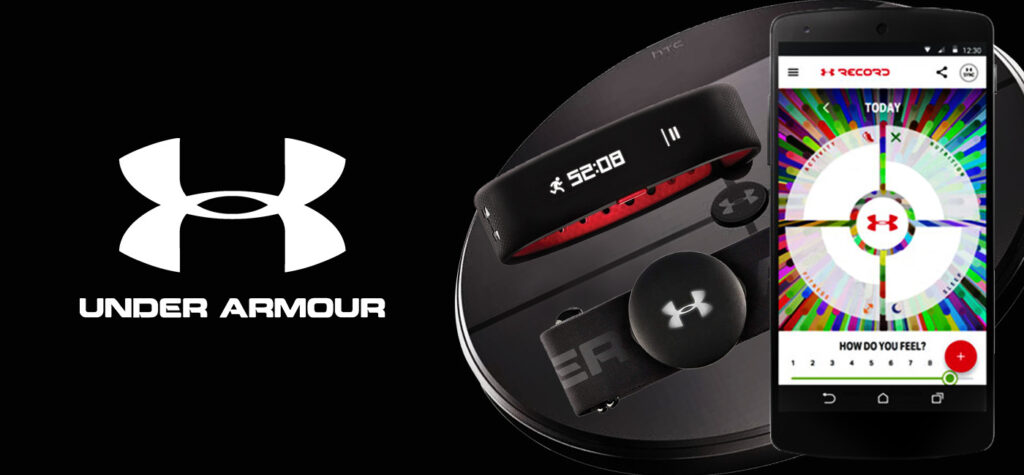
Under Armour has also developed a suite of mobile apps that complement its connected fitness platform. The UA Training app provides users with personalized workouts based on their fitness level and goals, while the UA Coaching app offers virtual coaching and personalized feedback. Additionally, the UA Community app allows users to connect with other Under Armour enthusiasts and participate in discussions related to fitness and wellness.
To further enhance its connected fitness offerings, Under Armour has partnered with various technology companies, such as IBM and Salesforce. These partnerships enable Under Armour to leverage cutting-edge technologies like artificial intelligence, machine learning, and cloud computing to deliver personalized experiences to its customers. For example, Under Armour uses IBM Watson’s AI capabilities to analyze user data and provide tailored recommendations for improving physical performance.
Under Armour’s connected fitness and technology strategy would not be complete without mentioning its impact on the retail experience. The company’s brick-and-mortar stores now double as hubs for its connected fitness platform, offering shoppers the opportunity to test out its technology firsthand. Customers can try on Under Armour’s smart shoes, which track steps and distance traveled, or use the company’s interactive mirrors to see how they look in different outfits. These immersive experiences create a seamless blend of online and offline shopping, further solidifying Under Armour’s position as a forward-thinking brand.
7. Retail Presence
Retail presence is a vital component of Under Armour’s marketing strategy. The company has focused on creating a strong retail presence to increase brand visibility, improve customer engagement, and drive sales. Under Armour’s retail strategy involves a combination of owned and operated retail stores, shop-in-shops, and e-commerce platforms.
Owned and Operated Retail Stores: Under Armour operates a chain of owned and operated retail stores across the United States and internationally. The total number of owned stores are more than 400. These stores serve as flagship locations for the brand, offering a wide range of Under Armour products and immersive brand experiences. The stores are strategically located in high-traffic areas, such as malls, shopping centers, and urban districts, to maximize visibility and foot traffic.
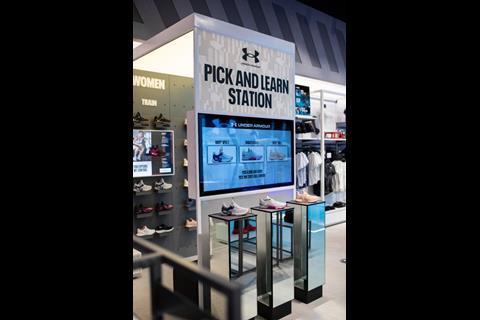
Shop-in-Shops: In addition to owned and operated stores, Under Armour has established shop-in-shops within select department stores and specialty retailers. These shop-in-shops offer a curated selection of Under Armour products and provide an intimate brand experience for customers. By partnering with other retailers, Under Armour expands its reach and exposes its brand to new audiences.
E-Commerce Platforms: Under Armour has also invested heavily in e-commerce platforms to broaden its retail presence. The company operates multiple websites catering to various markets, including underarmour.com, ua.com, and uae.com. These sites offer a wide assortment of products, easy navigation, and streamlined checkout processes, making it convenient for customers to shop from anywhere in the world.
To create an engaging retail experience, Under Armour incorporates innovative technology and design elements into its stores. For instance, the company’s “Fit Studio” concept combines interactive displays, augmented reality, and 3D scanning to help customers find the perfect size and style. Additionally, Under Armour’s “Shoe Closet” feature allows customers to scan their feet and receive personalized shoe recommendations based on their foot shape and running style.
Under Armour adopts an omnichannel approach to ensure a seamless shopping experience across all touchpoints. Customers can browse products online and pick them up in-store, or order items in-store and have them delivered to their homes. This integrated approach eliminates barriers between physical and digital channels, allowing customers to interact with the brand in the way that suits them best.
8. Customer Loyalty Programs
Customer loyalty programs are a crucial marketing strategy for Under Armour, as they aim to retain existing customers and encourage repeat purchases. The company’s loyalty program, known as “UA Rewards,” offers customers exclusive benefits and rewards for their purchases, such as discounts, free shipping, and early access to new products. Members can earn points for every dollar spent, which can be redeemed for rewards such as gift cards, apparel, and accessories. The program also includes tiered levels, with higher levels offering additional perks such as personalized service, exclusive events, and VIP access to new product launches.
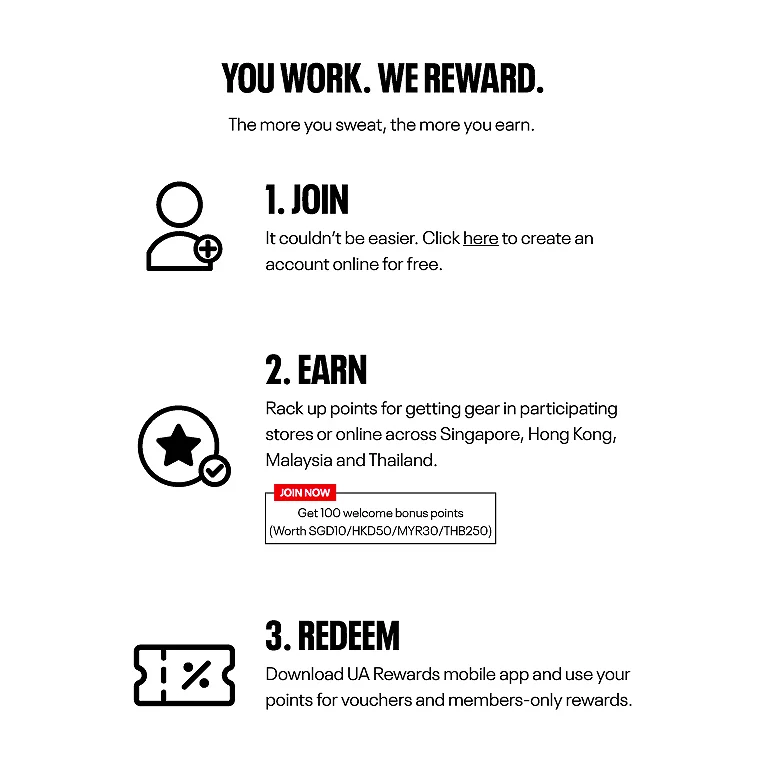
By offering incentives and recognition to loyal customers, Under Armour encourages repeat purchases and builds brand loyalty. The program also helps the company gather valuable customer data, which can be used to personalize marketing messages, improve product offerings, and enhance the overall customer experience. Furthermore, Under Armour’s loyalty program fosters a sense of community among its members, who can share their passion for the brand and connect with others through social media and in-store events. By investing in customer loyalty, Under Armour increases customer retention and drives long-term growth.
By implementing these strategies, Under Armour has successfully built a strong brand identity, engaged with its target audience, and driven sales growth over the years.
Marketing Mix of Under Armour
Let’s delve into a detailed analysis of each element of the marketing mix (4Ps) for Under Armour:
1. Product
Under Armour is renowned for its innovative and technologically advanced sportswear. The product range spans across various athletic categories, including apparel, footwear, and accessories.
A key distinguishing feature is the incorporation of cutting-edge materials and design elements aimed at enhancing athletic performance. From moisture-wicking fabrics to compression gear, Under Armour continually pushes the boundaries of sportswear innovation.
The brand’s commitment to product development ensures that athletes and fitness enthusiasts have access to gear that not only meets their functional needs but also aligns with the brand’s identity of performance and innovation.
2. Price
Under Armour employs a pricing strategy that positions it as a premium athletic brand. The emphasis on technological advancements and high-quality materials justifies a relatively higher price point. The brand recognizes the value it provides to consumers, emphasizing that the initial investment in Under Armour products pays off through durability, performance enhancement, and the overall quality associated with the brand.
Additionally, the tiered pricing strategy caters to a diverse consumer base, offering a range of products at different price levels to ensure accessibility while maintaining a premium image.
3. Place (Distribution)
Under Armour employs a multi-channel distribution strategy to ensure its products are widely accessible. The brand operates its own retail stores, providing a controlled and immersive brand experience. Additionally, strategic partnerships with third-party retailers and department stores extend the brand’s reach, making Under Armour products available in a variety of physical locations.
The brand’s e-commerce platform serves as a comprehensive and direct-to-consumer channel, offering convenience and accessibility for customers globally.
This omnichannel approach contributes to a seamless shopping experience, reinforcing Under Armour’s commitment to meeting customers wherever they choose to engage with the brand.
4. Promotion
Under Armour’s promotion strategy is multifaceted, encompassing various channels and tactics. The brand consistently invests in digital marketing, leveraging social media platforms, online advertising, and its official website to engage with its audience.
The use of influential athletes as brand ambassadors and the endorsement of high-profile celebrities strengthens the brand’s credibility and resonates with its target demographic.
Beyond traditional advertising, Under Armour engages in content marketing, telling compelling stories of athletes and showcasing the brand’s commitment to empowering individuals in their fitness journeys.
The brand’s involvement in community events, sponsorships of sports leagues, and grassroots initiatives reinforces its connection with its audience on both a personal and community level.
In summary, Under Armour’s marketing mix is characterized by a commitment to innovation in product development, a premium pricing strategy justified by quality and performance, a distribution strategy that combines company-owned stores with partnerships, and a comprehensive promotional approach that leverages digital channels, influential endorsements, and community engagement. These elements collectively contribute to Under Armour’s status as a leading brand in the competitive athletic apparel industry.
Also Read: Marketing Strategies and Marketing Mix of New Balance
To read more content like this, subscribe to our newsletter
